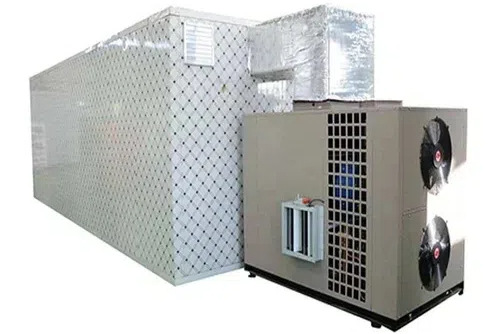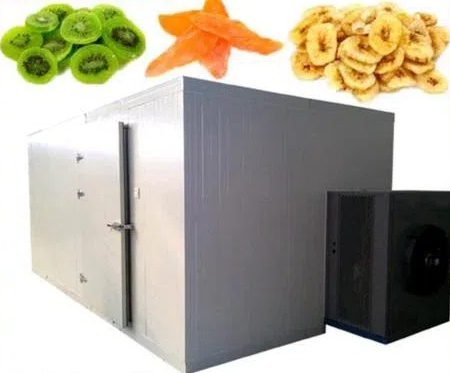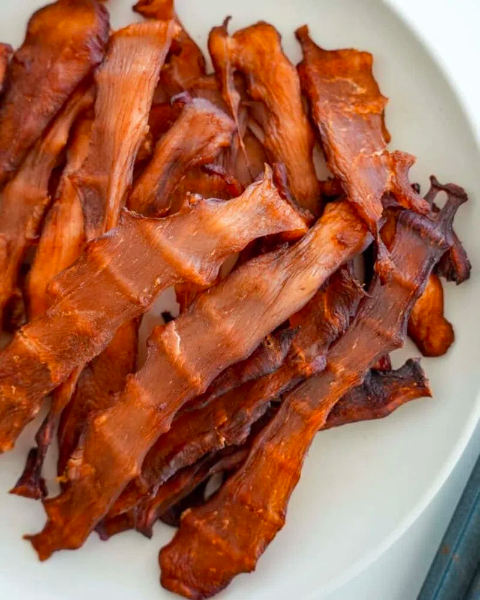
Content Menu
● How Does a Food Dehydrator Work?
● Common Uses for Food Dehydrators
● Benefits of Using a Food Dehydrator
● Practical Tips for Using a Food Dehydrator
● Dehydrating Techniques
● Creative Uses Beyond Snacks
● Health Benefits of Dehydrated Foods
● Conclusion
● FAQ
>> 1. What types of foods can I dehydrate?
>> 2. How long does it take to dehydrate food?
>> 3. Can I use my oven instead of a dehydrator?
>> 4. How should I store dehydrated foods?
>> 5. Are there any foods I should avoid dehydrating?
● Citations:
A food dehydrator is an essential kitchen appliance designed to remove moisture from food, thereby preserving it and extending its shelf life. This process not only prevents spoilage caused by bacteria, yeast, and mold but also concentrates the flavors of the food. In this article, we will explore the various uses of food dehydrators, their benefits, and practical tips for maximizing their potential.

How Does a Food Dehydrator Work?
Food dehydrators operate by circulating heated air around food items placed on trays. The heat causes moisture to evaporate from the food, while the fan ensures even air distribution. This method preserves the food without cooking it, allowing for better nutrient retention compared to traditional cooking methods.
- Temperature Control: Most dehydrators operate at temperatures between 85°F to 160°F (29°C to 71°C). This range is ideal for different types of food, with fruits typically dehydrated at higher temperatures than herbs or vegetables.
- Air Circulation: The fan in a dehydrator plays a crucial role in removing moisture. It pulls in dry air from outside, circulates it over the food, and expels moist air through vents. This continuous airflow prevents the reabsorption of moisture, ensuring thorough dehydration.
Common Uses for Food Dehydrators
Food dehydrators are incredibly versatile and can be used for a wide variety of foods. Here are some common applications:
- Fruits: Dehydrating fruits like apples, bananas, and mangoes intensifies their sweetness and flavor while creating healthy snacks. Dried fruits can be used in trail mixes, baked goods, or enjoyed on their own.
- Vegetables: Vegetables such as tomatoes, peppers, and carrots can be dehydrated to create chips or powders for seasoning. Dried vegetables are perfect for soups and stews.
- Meats: Making jerky is one of the most popular uses of a food dehydrator. Lean cuts of meat can be marinated and then dehydrated to create flavorful snacks that last for months.
- Herbs and Spices: Fresh herbs can be dried to preserve their flavor for later use in cooking. This is particularly useful for gardeners looking to save their harvest.
- Yogurt and Cheese: Some dehydrators can maintain low temperatures suitable for culturing yogurt or drying cheese, making them multifunctional appliances.
- Granola and Snacks: Homemade granola bars or fruit leathers can be created using a dehydrator, allowing you to control the ingredients and avoid preservatives found in store-bought versions.

Benefits of Using a Food Dehydrator
Using a food dehydrator comes with numerous advantages:
- Extended Shelf Life: Dehydrating food significantly prolongs its shelf life by reducing moisture content. Properly stored dried foods can last from several months to years.
- Nutrient Retention: Compared to other preservation methods like canning or freezing, dehydration preserves more nutrients. The low heat used in dehydrators helps retain vitamins and minerals that might otherwise be lost during cooking.
- Cost-Effective: Investing in a food dehydrator allows you to buy fresh produce in bulk when it's in season and preserve it for later use. This can lead to significant savings over time.
- Healthy Snacking: Homemade dried snacks are healthier than many store-bought options that often contain added sugars and preservatives. You have complete control over what goes into your snacks.
- Reduced Food Waste: A dehydrator allows you to utilize surplus produce that might otherwise go to waste. By drying excess fruits or vegetables, you can enjoy them long after their peak freshness has passed.
Practical Tips for Using a Food Dehydrator
To get the most out of your food dehydrator, consider these practical tips:
1. Prepare Your Food Properly: Wash fruits and vegetables thoroughly before slicing them into uniform pieces. This ensures even drying.
2. Use Parchment Paper: For sticky foods like fruit leathers or purees, use parchment paper on trays to prevent sticking and make cleanup easier.
3. Monitor Drying Times: Different foods have different drying times based on their moisture content and thickness. Refer to guides or recipes specific to your dehydrator model for optimal results.
4. Store Dried Foods Correctly: Once dried, store foods in airtight containers away from light and moisture to maximize shelf life.
5. Experiment with Flavors: Don't hesitate to add spices or seasonings before dehydration. This enhances the flavor profile of your dried snacks.
Dehydrating Techniques
Understanding specific techniques can significantly improve your results when using a food dehydrator:
- Blanching Vegetables: Some vegetables benefit from blanching (briefly boiling) before dehydration as it helps preserve color and texture while speeding up the drying process.
- Uniform Slicing: Ensure that all pieces are cut uniformly (around ¼ inch thick) so they dehydrate evenly. Using a mandoline slicer can help achieve consistent thickness.
- Avoid Mixing Strong Flavors: When dehydrating different types of foods together, avoid mixing strong-flavored items (like onions or garlic) with sweet fruits (like apples or bananas) as flavors may transfer during the drying process.
Creative Uses Beyond Snacks
Food dehydrators are not just limited to creating snacks; they can also be used creatively in meal preparation:
- Dehydrated Meals: You can prepare complete meals like stews or casseroles by cooking them first and then dehydrating them for long-term storage. Just rehydrate with hot water when ready to eat!
- Dried Soups: Create your own instant soup mixes by combining dried vegetables, herbs, and spices in jars that only require boiling water for preparation.
- Fruit Powders: Dehydrate fruits like strawberries or bananas and then blend them into powders that can be added to smoothies or used as natural sweeteners in baking.
Health Benefits of Dehydrated Foods
Dehydrated foods offer several health benefits:
- Reduced Risk of Foodborne Illnesses: By removing moisture that bacteria thrive on, dehydration decreases the risk of spoilage and foodborne illnesses.
- Increased Fiber Content: Dried fruits and vegetables often have higher fiber concentrations than their fresh counterparts due to reduced water content, promoting better digestion.
- Convenient Nutrient Sources: Dried foods are lightweight yet nutrient-dense options ideal for hiking or camping trips where fresh produce may not be available.
Conclusion
Food dehydrators are invaluable tools for anyone interested in preserving food while enhancing its flavor and nutritional value. They provide a simple way to extend the shelf life of fruits, vegetables, meats, herbs, and more without resorting to preservatives or artificial additives. By understanding how they work and exploring their various uses, you can make healthy snacks at home that are both delicious and cost-effective.

FAQ
1. What types of foods can I dehydrate?
You can dehydrate fruits (like apples and bananas), vegetables (such as tomatoes and peppers), meats (for jerky), herbs (like basil and thyme), yogurt, cheese, granola bars, and even soups!
2. How long does it take to dehydrate food?
Dehydration times vary based on the type of food being dried and its thickness but typically range from 4 hours for thin fruit slices to 12 hours or more for thicker items like meats.
3. Can I use my oven instead of a dehydrator?
While you can use an oven at low temperatures to dehydrate food, it is generally less efficient than a dedicated dehydrator because it lacks proper airflow control necessary for even drying.
4. How should I store dehydrated foods?
Store dried foods in airtight containers in a cool, dark place away from moisture. Vacuum sealing is an excellent option for extending shelf life further.
5. Are there any foods I should avoid dehydrating?
Avoid high-fat foods like avocados or peanut butter as they do not dehydrate well due to rancidity concerns. Additionally, avoid foods with high water content that may not dry effectively.
Citations:
[1] https://etsolutions.in/10-amazing-benefits-of-electrical-food-dehydrator-machines/
[2] https://www.youtube.com/watch?v=lEUA2t2XD5M
[3] https://theinspiredhome.com/articles/a-beginners-gdeletee-to-dehydrating-food/
[4] https://www.webstaurantstore.com/guide/741/food-dehydrators-buying-guide.html
[5] https://www.osbheatpump.com/news/how-to-use-a-food-dehydrator-10-useful-tips-for-beginners-and-advanced-users/
[6] https://www.commercialdehydrators.com.au/dehydrating-recipes-filters
[7] https://www.bestbuy.com/discover-learn/10-reasons-to-buy-a-food-dehydrator/pcmcat1634332391134
[8] https://www.freshoffthegrid.com/dehydrating-food/
[9] https://www.webmd.com/diet/dehydrating-food-good-for-you
[10] https://homesteadingfamily.com/preservation-101-intro-to-dehydrating-food/
[11] https://www.goodhousekeeping.com/appliances/a31904157/what-is-a-dehydrator/
[12] https://learn.eartheasy.com/guides/a-beginners-guide-to-dehydrating-food/
[13] https://www.backpackingchef.com/food-dehydrator-recipes.html
[14] https://brodandtaylor.com/pages/dehydrating
[15] https://www.breville.com/content/breville/us/en/blog/cooking/how-to-use-a-dehydrator/_jcr_content/root/container_741553154/container/image.coreimg.85.1200.jpeg/1718622778417/how-to-use-dehydrator.jpeg?sa=X&ved=2ahUKEwjEyeuUjeqKAxXRUkEAHaLQIYcQ_B16BAgEEAI
[16] https://insanelygoodrecipes.com/dehydrator-recipes/
[17] https://www.healthline.com/nutrition/dehydrated-food
[18] https://www.allrecipes.com/article/how-to-use-a-food-dehydrator/
[19] https://www.youtube.com/playlist?list=PL6ygl2lNPriODiu2XahnHHUhj6mEObz0P
[20] https://community.waring.com/blog/p/13or1/the-remarkable-benefits-of-adding-a-food-dehydrator-to-your-kitchen-arsenal
[21] https://www.sunbeam.com.au/recipes/dehydrator-recipes
[22] https://www.youtube.com/watch?v=rXNIHzcE8F0
[23] https://eatsleepwild.com/homemade-dehydrated-backpacking-meals/











